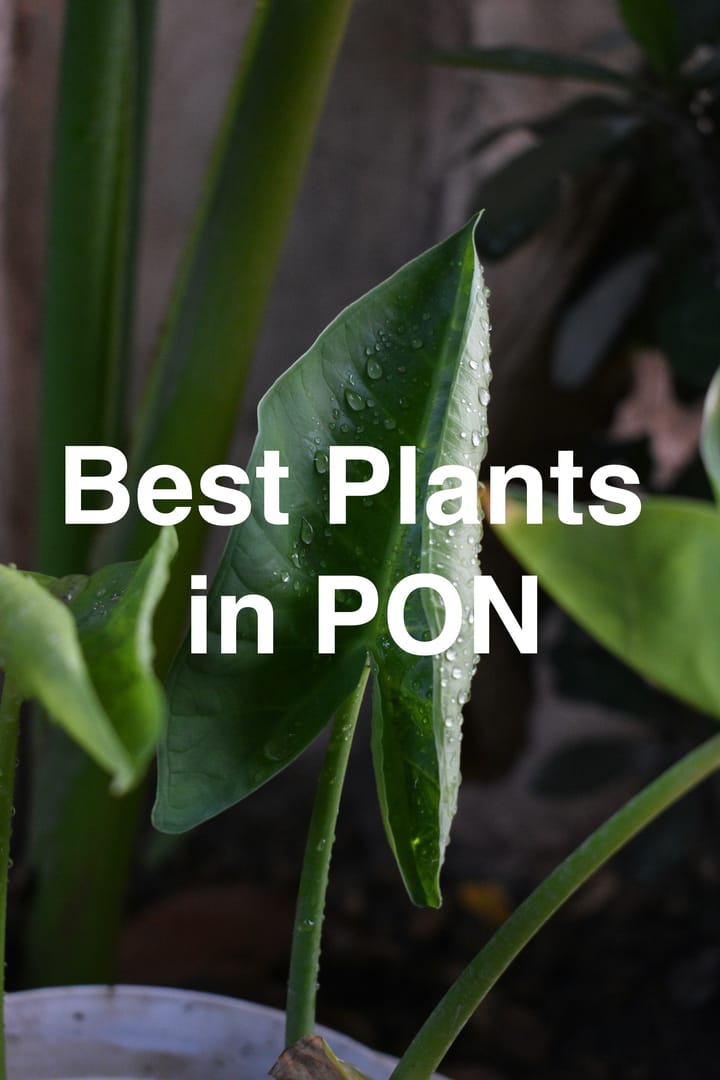What is Considered Full Sun, Partial Shade, and Full Shade?
When planning a garden, knowing the light requirements for your plants is crucial for their health and growth. The terms 'full sun,' 'partial shade,' and 'full shade' help gardeners determine the best location for each plant.

Full sun refers to areas that receive more than six hours of direct sunlight per day.
This level of light is ideal for many flowering plants and vegetables, which need ample sunshine to thrive.
On the other hand, partial shade and partial sun are conditions that offer four to six hours of sunlight daily, often preferring the cooler morning hours over the intense afternoon heat.
It's important to differentiate these two: partial sun plants require a minimum level of sun, whereas partial shade plants need protection from too much sun.
Full shade areas receive less than four hours of sunlight each day and are typically found under dense trees or on the north side of buildings.
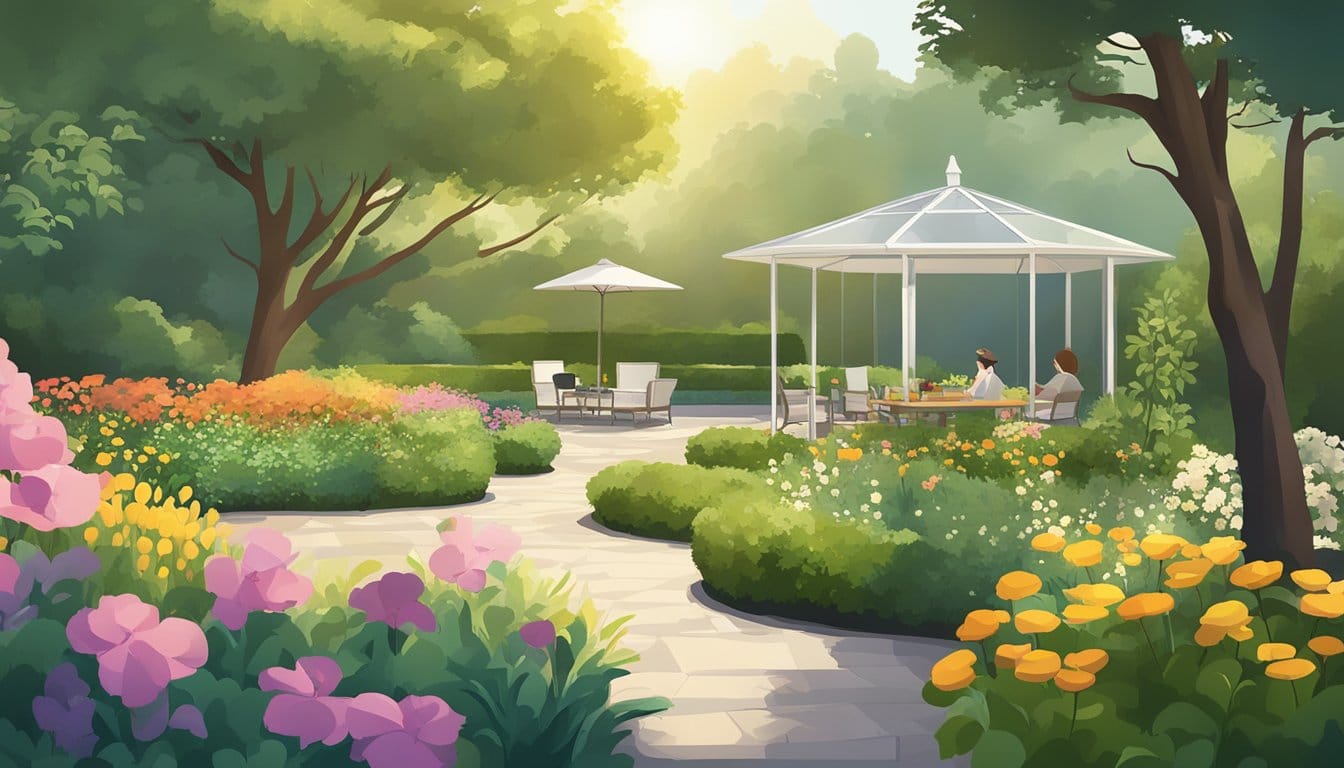
Plants suited to full shade can struggle in more intense light conditions.
Key Takeaways
- Understanding light categories is key to plant health.
- Full sun means more than six hours of direct sunlight.
- Plants have varied needs for sun and shade.
Understanding Light Requirements
When planning your garden, it’s crucial to know how much sunlight your plants need. Picking the right spot for your plants ensures they get the necessary light to thrive.
Defining Sunlight Terms
Full Sun means that a plant requires more than 6 hours of direct sunlight per day. These plants need a clear view of the sky for the majority of the day to perform best.
- Partial Sun and Partial Shade both describe areas that receive 4 to 6 hours of sunlight. They sound similar, but there's a subtle difference:
- Partial Sun plants need this amount of light preferably with some afternoon sun.
- Partial Shade plants prefer morning and early afternoon light, as the hot late sun can be too intense.
Full Shade indicates a plant can survive with less than 4 hours of direct sunlight each day, commonly thriving in dappled light or with sun exposure only in the morning.
The Role of Sun Exposure in Plant Health

Light is a critical factor in plant health. You can observe your garden to decide where each plant label’s light requirements can be met.
Here are steps to figure out the light levels in your garden:
- Observe your yard at different times during the day to see how sunlight moves across the space.
- Note areas that receive direct sunlight and for how long.
- Use this information, along with research on specific plants, to position them where they can receive their ideal light conditions.
Remember, consistent sun exposure is essential for plants to photosynthesize and grow.
Your observations combined with proper plant labels ensure your plants will get their light needs met and thrive in your garden.
Identifying Full Sun Conditions

When you're determining the right conditions for sun-loving plants, it's important to understand what full sun really means and how it benefits your plants.
Characteristics of Full Sun
Full sun refers to an area that receives at least six hours of direct sunlight each day.
This sun exposure is typically measured during the growing season and doesn't necessarily need to be continuous; it can be accumulated over the course of the day.
For your garden, consider these specifics:
- Morning Sun: This is the gentle sun of the early day. Full sun locations receive morning sunlight but aren't limited to it.
- Afternoon Sun: The intense sun after midday. Many full sun plants thrive even in the heat that comes with afternoon sun.
- Duration: Areas that get six to eight hours of sunlight.
- Quality of Light: Direct and unfiltered by trees, fences, or buildings.
The quality of the soil in full sun conditions can vary, but it often needs to be able to retain enough moisture to withstand the added heat without drying out too quickly.
Water needs can be higher in full sun areas, as the increased light and heat lead to more evaporation.
Benefits of Full Sun to Plants
Plants that require full sun are specially adapted to thrive under these conditions. Here's how full sun benefits them:
- Healthy Growth: Adequate sunlight is crucial for photosynthesis, which fuels plant growth.
- Flowering: Many flowers and trees need full sun to bloom to their full potential.
- Disease Prevention: Full sun can help prevent disease by reducing humidity around the plants and facilitating quick drying of the foliage.
Keep in mind that even plants that love full sun will need your attention to soil conditions and watering to maintain their health and vitality.
Proper care ensures your plants can take full advantage of the benefits provided by ample sunlight.
Partial Sun and Partial Shade Explained
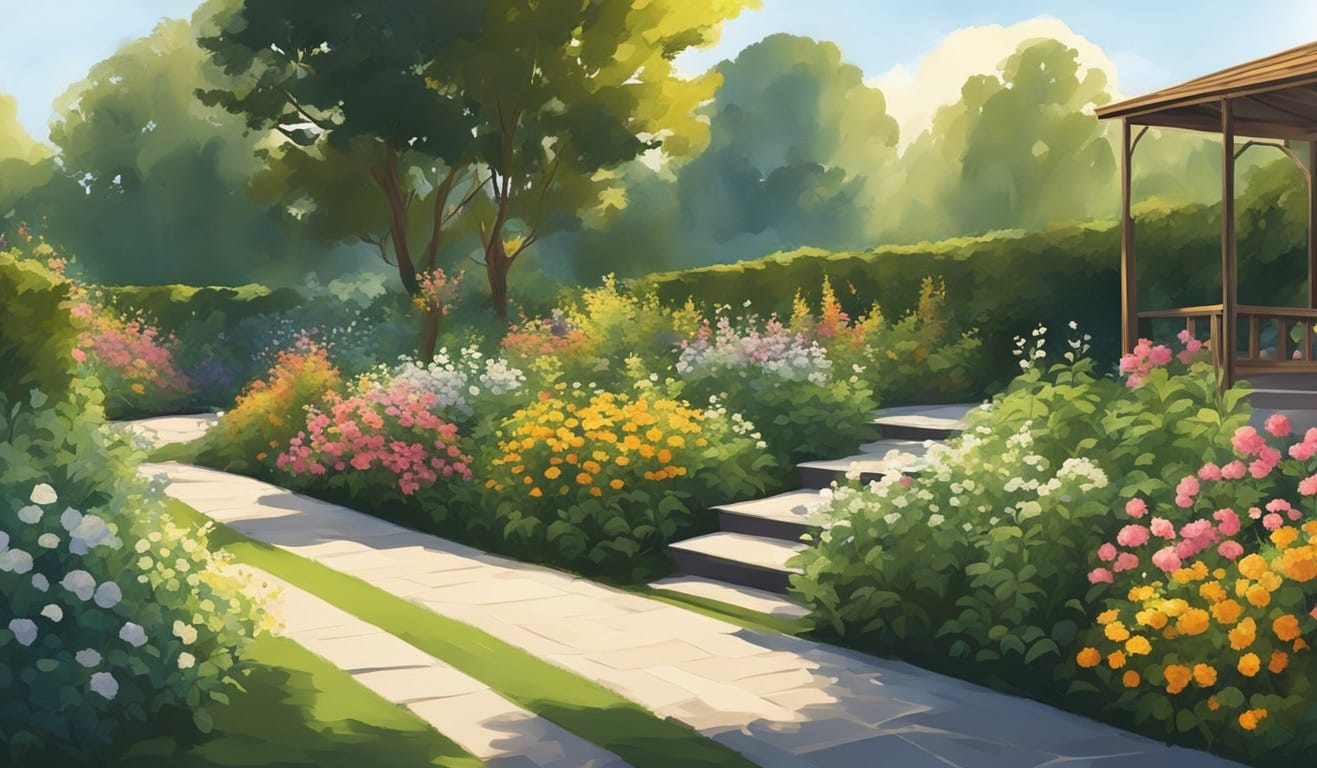
Understanding the light requirements of plants is essential for successful gardening.
The terms partial sun and partial shade may seem similar, but they have distinct meanings that can impact the health and growth of your plants.
Differences Between Part Sun and Part Shade
Part Sun refers to areas that receive 4 to 6 hours of sunlight per day.
It's important to note that these plants thrive with exposure to the gentler rays of the morning sun but can also endure the more intense afternoon sun to a degree.
When selecting a plant labeled for part sun, ensure it will get at least the minimum amount of sun required.
In contrast, Part Shade areas also benefit from 4 to 6 hours of sunlight but are typically sheltered from the harsh afternoon sun.
These plants prefer to bask in the morning sun, with some also tolerating filtered light, also known as dappled shade.
If your garden has areas that are sunny in the morning but shaded in the afternoon, choose plants that are marked suitable for part shade.
- Part Sun: 4-6 hours of sunlight, tolerates afternoon sun.
- Part Shade: 4-6 hours of sunlight, prefers protection from intense afternoon sun.
Selecting Plants for Partial Sunlight Areas
When you're choosing plants for areas with partial sunlight, your focus should be on their compatibility with the available light conditions.
For flowers and shrubs that flourish in part sun, seek out varieties that can handle a mix of sun throughout the day.
These plants are adaptable and often robust enough to perform well even if the sunlight is not perfectly consistent.
For spots that are mostly receiving morning sun followed by afternoon shade, go for species that are labeled for part shade.
These plants need protection from the strong afternoon sun to thrive.
The right part shade plants will reward you with growth and blooms without the stress of too much direct sunlight.
- Flowers for Part Sun: Choose varieties that can manage both morning and afternoon sun.
- Shrubs for Part Shade: Opt for types that require morning light and afternoon protection.
By understanding these light conditions and selecting the right plants for your garden's specific sun exposure, you can create a thriving landscape tailored to its natural environment.
The Challenges of Full Shade
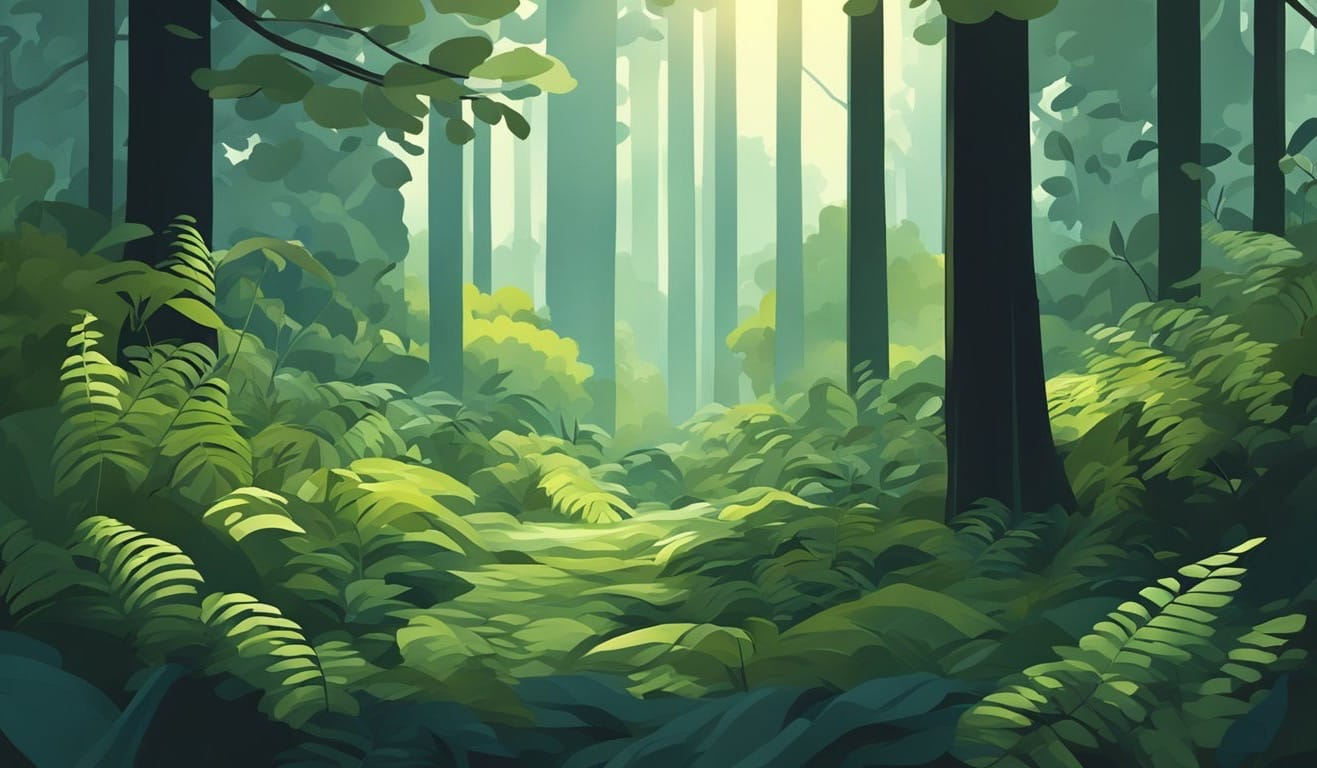
Creating a thriving garden in areas with full shade can be tough. You have to match plants that can grow without much sunlight to the type of shade your garden has.
Adapting Gardens to Low Light
In full shade, your garden receives less than four hours of direct sunlight each day. This lack of light can make it difficult for many plants to grow.
Shade plants often have larger leaves to absorb as much light as they can. To adapt your garden, aim for plants designed for these conditions.
Here's a short list of plants that are known to perform well in full shade:
- Ferns
- Hostas
- Astilbe
Understand your garden's canopy, trees with leaves (like deciduous trees) that block the sun for most of the day can create dense shade.
On the other hand, gardens with evergreen trees can produce even more profound shade year-round.
Choosing the right plants that can tolerate or even thrive in these light conditions is crucial.
Types of Shade and Their Impact
Not all shade is created equal. Here are the different types you might encounter:
- Deep shade: No direct sunlight, with dark conditions similar to a dense forest.
- Moderate shade: Some reflected light is available, but no direct sunlight.
- Filtered shade: Sunlight is scattered through a semi-transparent canopy, often found under trees with fine leaves.
Your shade type influences what you can grow. Woodland plants, like trillium or Solomon's seal, are perfect for moderate to filtered shade – they are naturally adapted to these environments.
For deep shade, you may need to rely more on textured foliage for visual interest, as flowers are less likely to bloom with such minimal light.
Designing a Garden for Varied Light Conditions
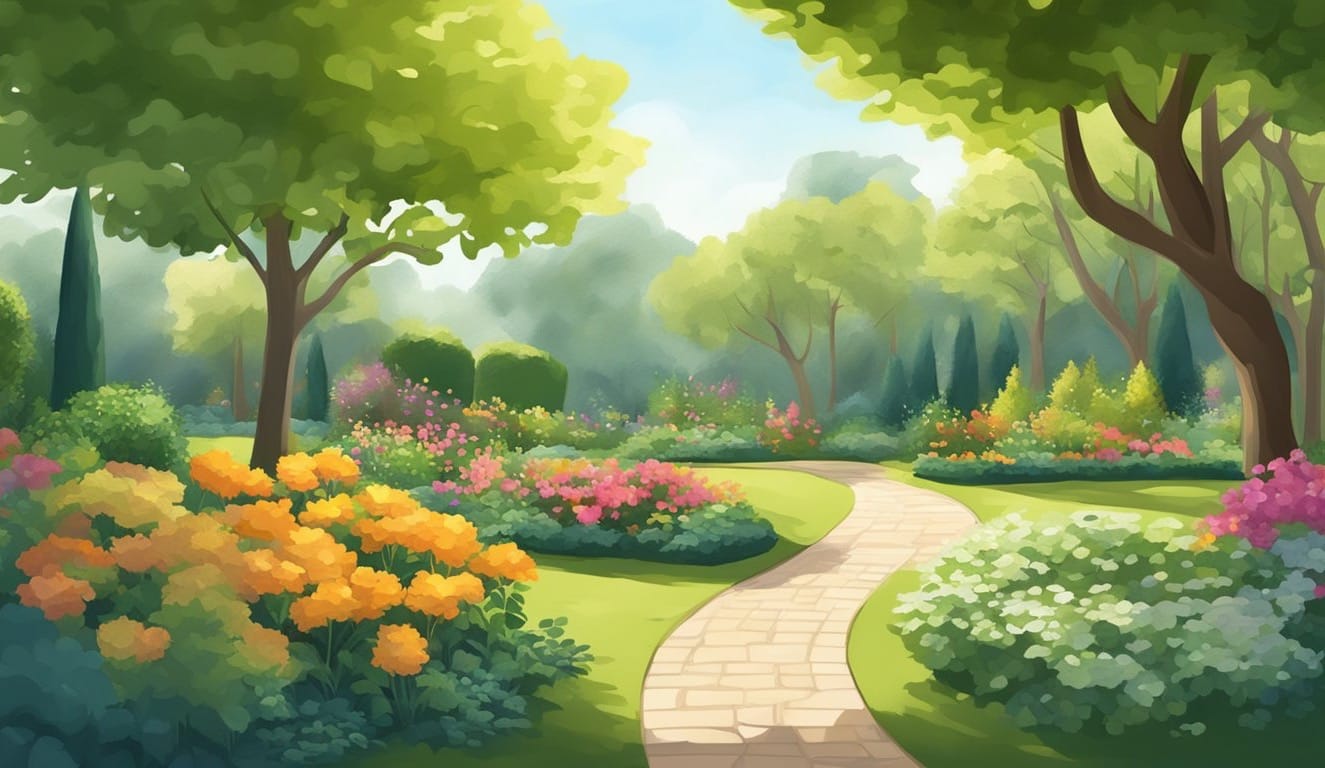
When planning your garden, understanding the nuances of sunlight exposure is crucial.
You'll be crafting a space that merges the diversity of plants thriving in different light conditions, using design strategies for optimal growth.
Balancing Sun and Shade in the Garden Layout
Optimizing the layout of your garden involves placing plants in areas where they will naturally thrive.
It’s important to first map out the spots that receive full sun, partial shade, and full shade throughout the day.
This can be done by observing your garden and noting where the sun shines at different times.
Full Sun Areas:
- Suitable for plants that need more than six hours of direct sunlight.
- Ideal choices: Sunflowers and other sun-loving flowers or vegetables.
- Consider using mulch to retain soil moisture as these areas can dry out quickly.
Partial Shade Areas:
- Receive about four to six hours of sunlight, preferably in the morning.
- Perfect for plants like hostas, which prefer some relief from intense afternoon heat.
Full Shade Areas:
- These spots get less than four hours of direct sunlight and are conducive to shade gardens rich in ferns and other low-light plants.
Remember to use containers to introduce flexibility in your garden design. They allow you to move plants between sun and shade as needed, catering to the seasonal changes in light.
By meticulously placing your plants according to their light needs and monitoring their growth, you create a dynamic and resilient garden.
Your careful planning ensures each plant gets its ideal amount of sunlight, resulting in a garden that is both beautiful and bountiful.
Caring for Plants Based on Sunlight Needs

Proper care for your plants includes understanding how sunlight affects watering and soil preparation. Different light conditions require tailored approaches to ensure healthy growth.
Watering Strategies for Different Light Exposures
Sun-loving plants that thrive in full sun conditions usually need more frequent watering, as they are exposed to heat for longer periods.
However, it's crucial to avoid overwatering, which can cause root rot. Typically, you should:
- Check the soil moisture regularly.
- Water deeply but less frequently to encourage roots to grow downward.
On the other hand, shade plants in partial shade or full shade don’t dry out as quickly, so they need less water. Their watering schedule should be:
- Less frequent, ensuring that the soil is moist but not wet.
- Done in the morning to reduce water loss and prevent fungal growth.
Soil and Mulching Techniques for Sun and Shade
For plants in full sun, it’s important to use soil that retains moisture without becoming waterlogged.
Incorporating organic matter can help achieve this balance. Consider these points:
- Use mulch to maintain soil temperature and moisture.
- Add compost to improve soil fertility and water retention.
In contrast, shade plants benefit from soil that stays cool and doesn’t compact easily. Mulching is also beneficial in shaded areas to:
- Prevent soil compaction caused by less heat and evaporation.
- Maintain an even soil temperature and moisture level.
Seasonal and Environmental Factors Influencing Sunlight

Seasons and environmental conditions dramatically impact the sunlight your garden receives. You must account for these factors to ensure your plants thrive year-round.
Considering Seasonal Changes in Sun Angle
With seasons, the sun's angle changes, altering the intensity and duration of sunlight.
In summer, the sun is higher in the sky, and days are longer, resulting in more intense sunlight. Plants listed as full sun typically thrive in this season due to the increased light intensity.
Conversely, in winter, the sun's angle is lower, so even full sun plants might exhibit signs of light shade conditions and require additional care.
- Spring and Autumn: These transitional periods bring moderate sun angles, leading to shifts in both sun exposure and the duration of shade. You'll often find plants waking up in spring and winding down in autumn as the light conditions change.
- Time of Day: Morning sunlight is generally less intense than afternoon sun. When considering placement, remember that delicate plants may prefer the gentler morning rays, which count toward their daily sunlight quota.

Accounting for Weather and Climate Variability
Weather and climate play a significant role in how much sunlight reaches your plants.
Cloudy weather can reduce light intensity, limiting photosynthesis and affecting plant health.
Latitude also influences sunlight exposure—the further you are from the equator, the more pronounced the seasonal changes in sun exposure and light duration.
- Elevation: At higher elevations, sunlight can be more intense, even if the temperature feels cooler. Be mindful that the intensity of sunlight can lead to quicker evaporation, and plants may need more frequent watering.
- Local climate conditions, such as fog or persistent cloud cover, can necessitate the use of plants that tolerate less direct sunlight.
- Weather Patterns: Ongoing or seasonal weather events, like monsoon seasons or dry spells, have the potential to disrupt the expected sunlight patterns, necessitating adaptations in your gardening practices.
Frequently Asked Questions
When selecting plants for your garden, understanding sunlight requirements is crucial for ensuring their health and growth.
These questions address common concerns regarding sun exposure and plant care.
Can plants labeled as 'full sun' thrive when planted in shaded areas?
No, plants labeled as 'full sun' typically need at least 6 to 8 hours of sunlight each day. If these plants are placed in shaded areas, they may struggle to grow and not produce flowers or fruit well.
How does 'full sun' differ from 'direct sun' in gardening terminology?
'Full sun' means a plant should receive uninterrupted sunlight for the majority of the day, while 'direct sun' refers to sunlight that reaches the plant without any obstruction, such as through a window.
What distinguishes 'partial sun' from 'partial shade' in plant care?
'Partial sun' plants require 4 to 6 hours of sunlight daily, with an emphasis on not receiving less than the minimum. 'Partial shade' plants also need 4 to 6 hours but are better suited to less intense morning light rather than the strong afternoon sun.
How can gardeners interpret the label 'full sun to part shade' when selecting plants?
The label 'full sun to part shade' suggests that the plant is versatile. It can tolerate anywhere from 3 to over 6 hours of sunlight per day, making it suitable for a range of conditions from fairly sunny spots to areas that get a mix of sun and shade.
What types of plants are ideal for growth in areas with 'full shade' conditions?
Plants that are ideal for 'full shade' areas will thrive with less than 4 hours of sunlight per day. These include shade-loving plants like ferns, hostas, and certain types of ground cover which can flourish without direct sunlight.
What methods can be used to accurately measure the amount of sunlight for garden planning?
To measure sunlight in your garden, observe and note the areas of light and shade throughout the day. You can use sunlight calculators or apps, or simply track the sun's movement and mark the sunny and shaded areas at different times to understand the patterns.

